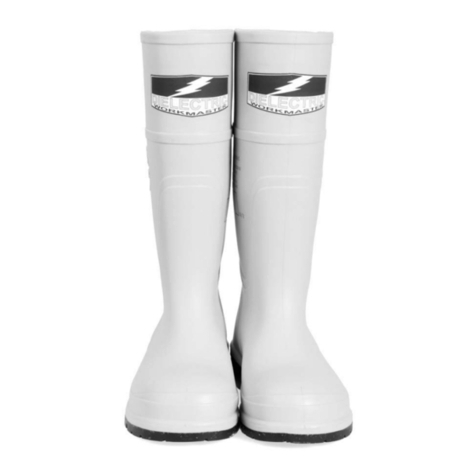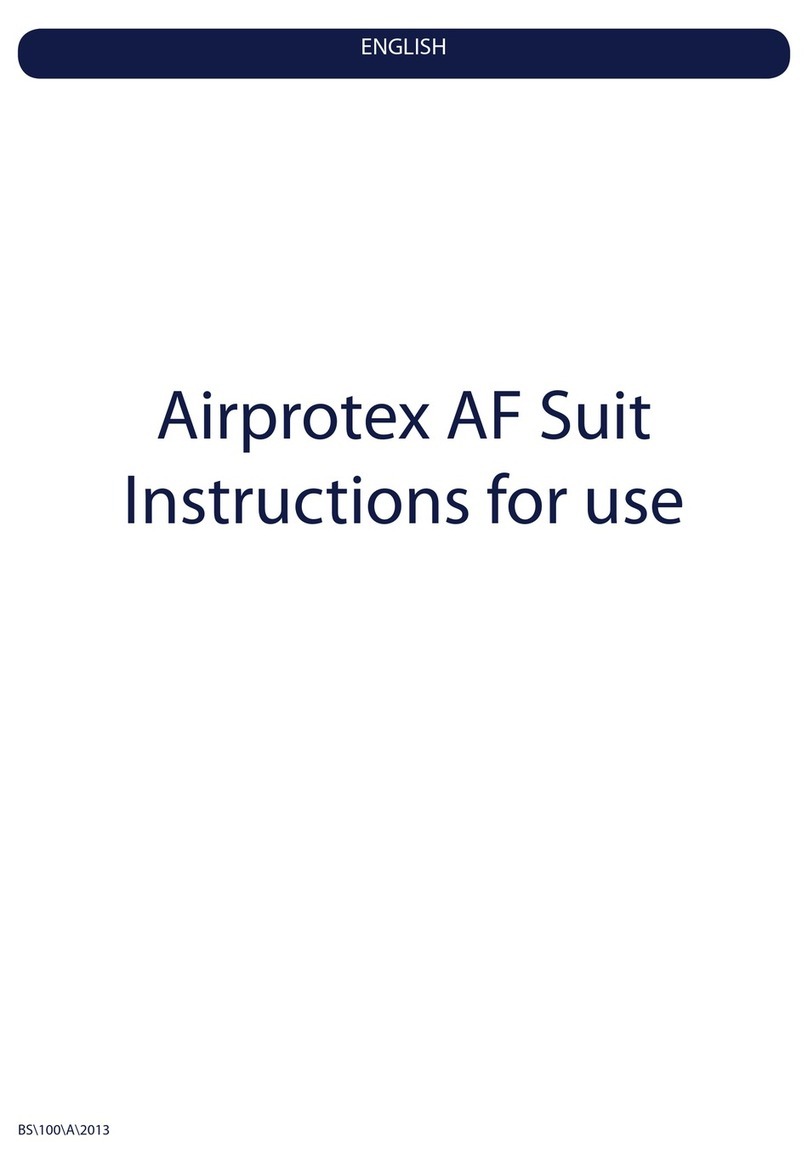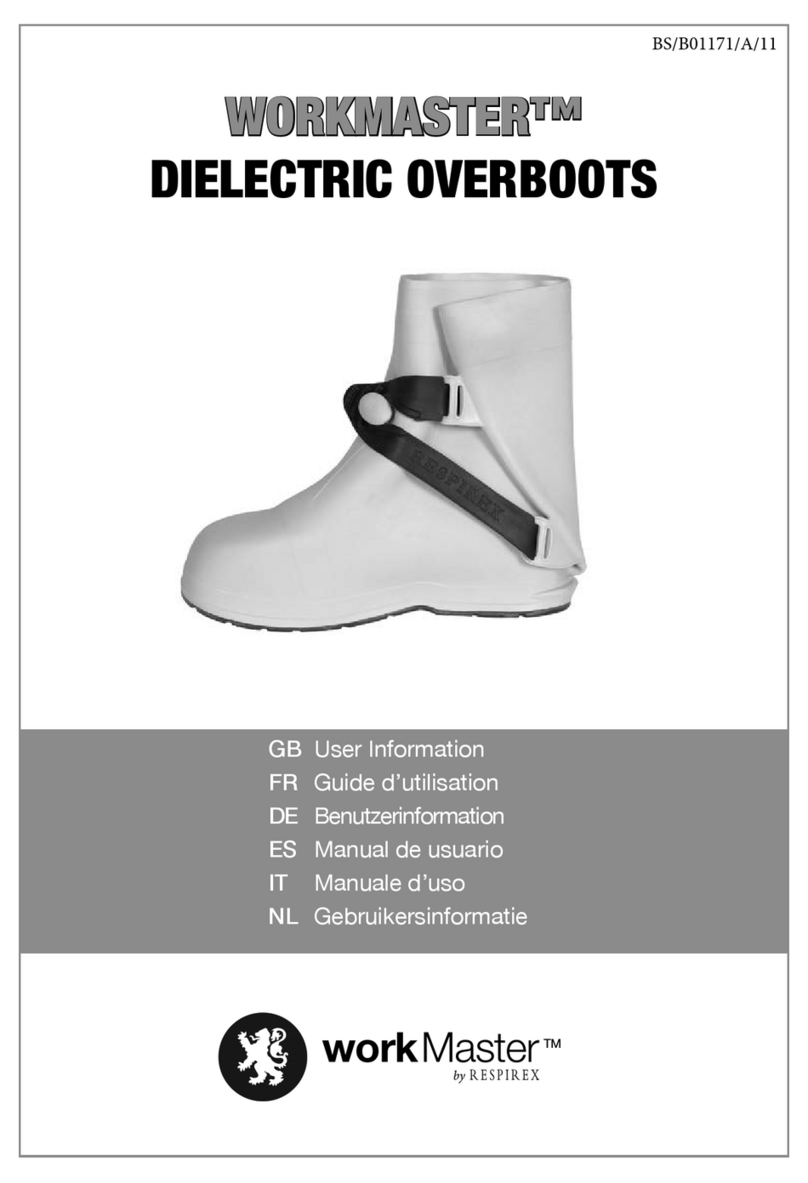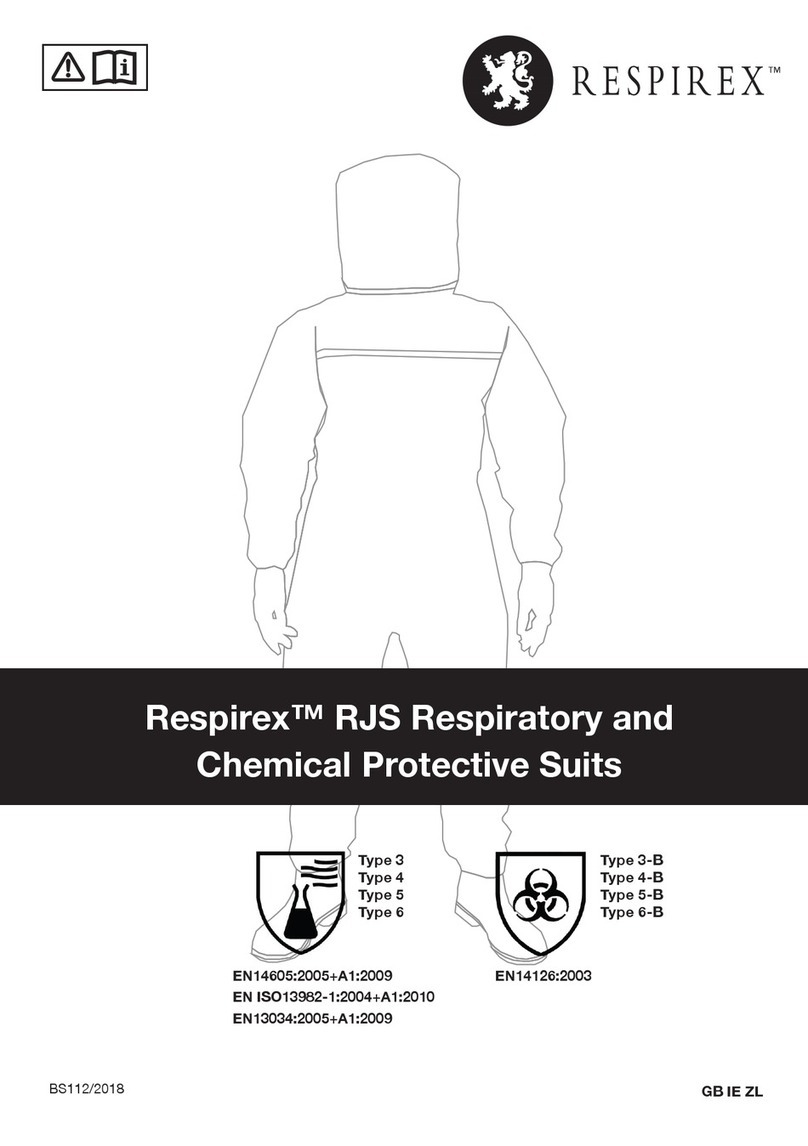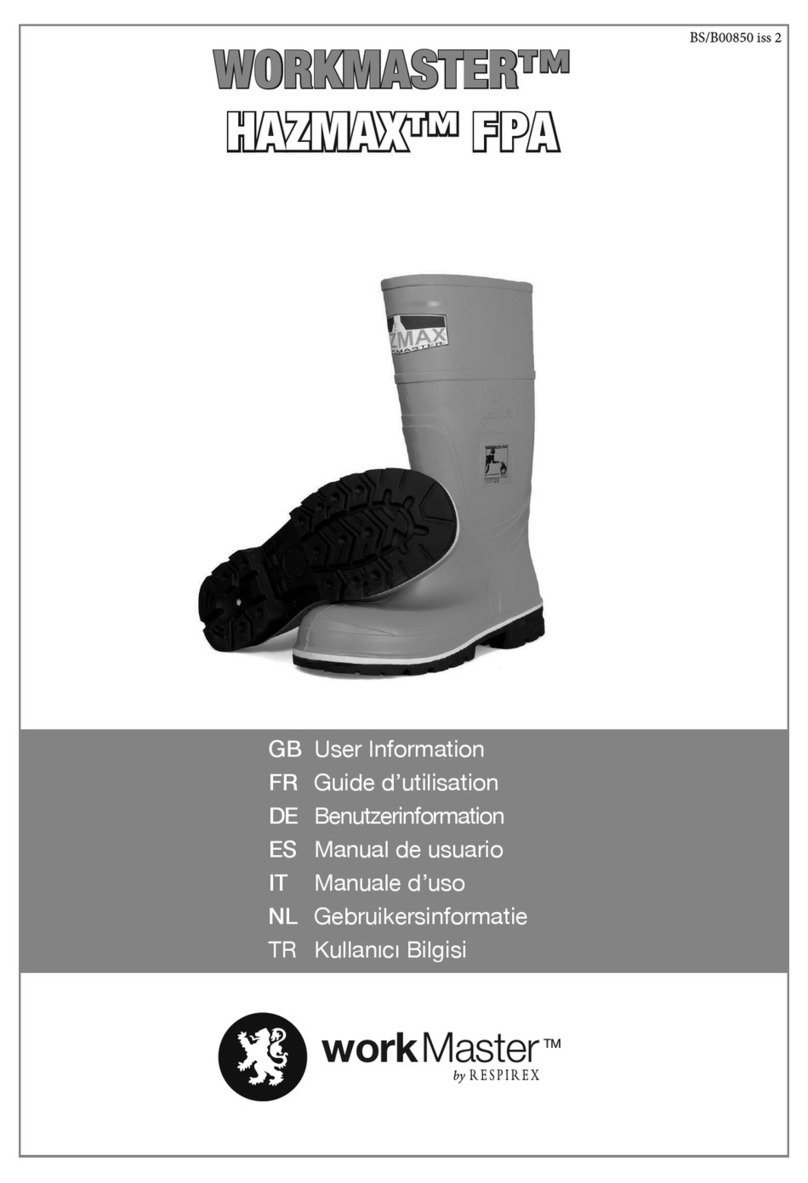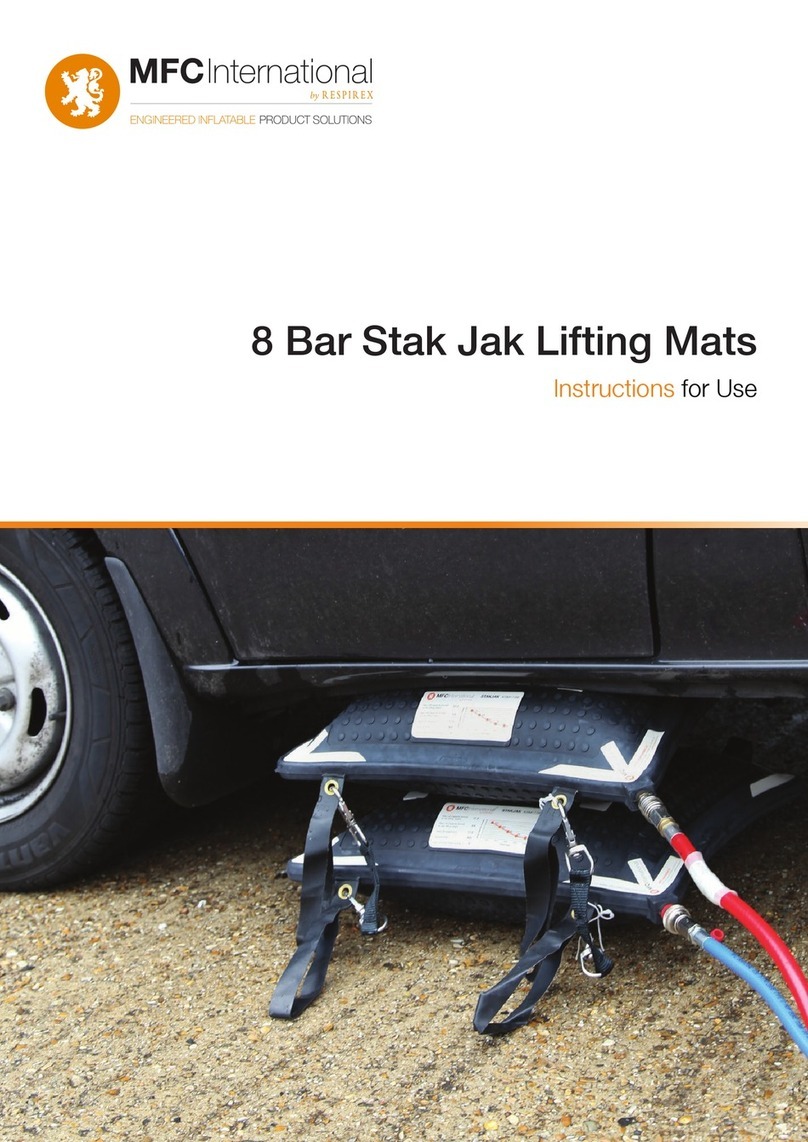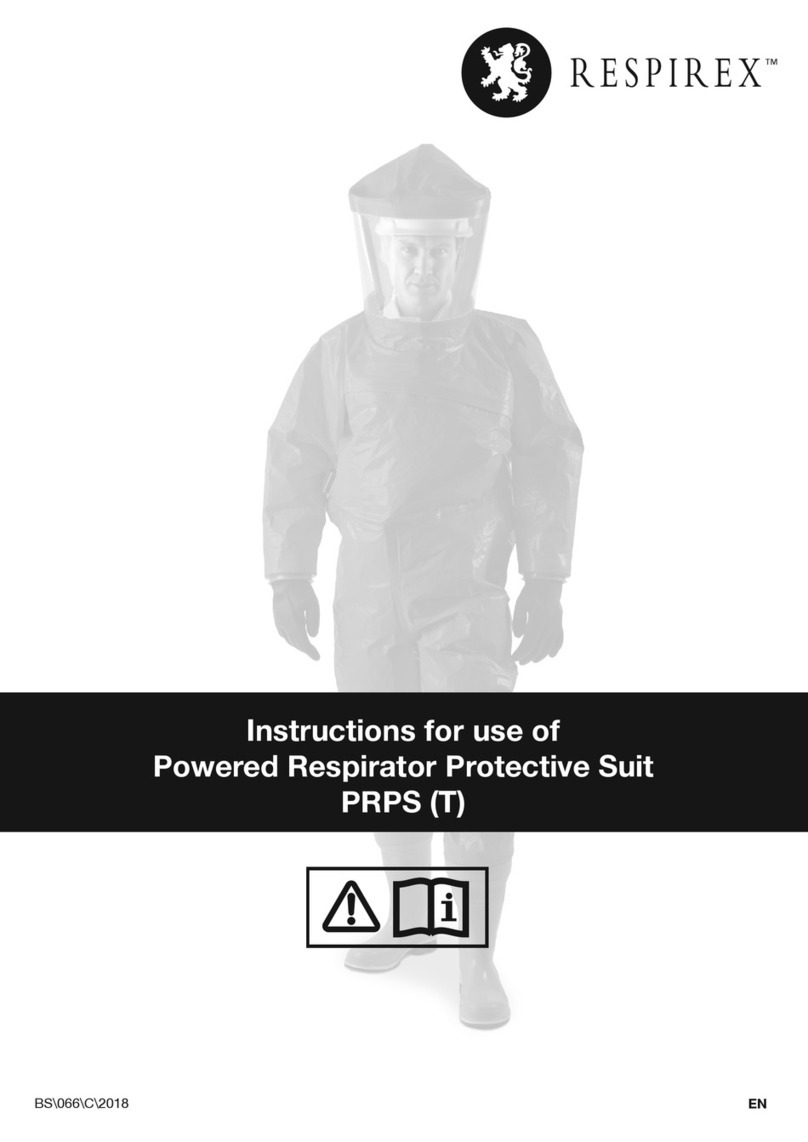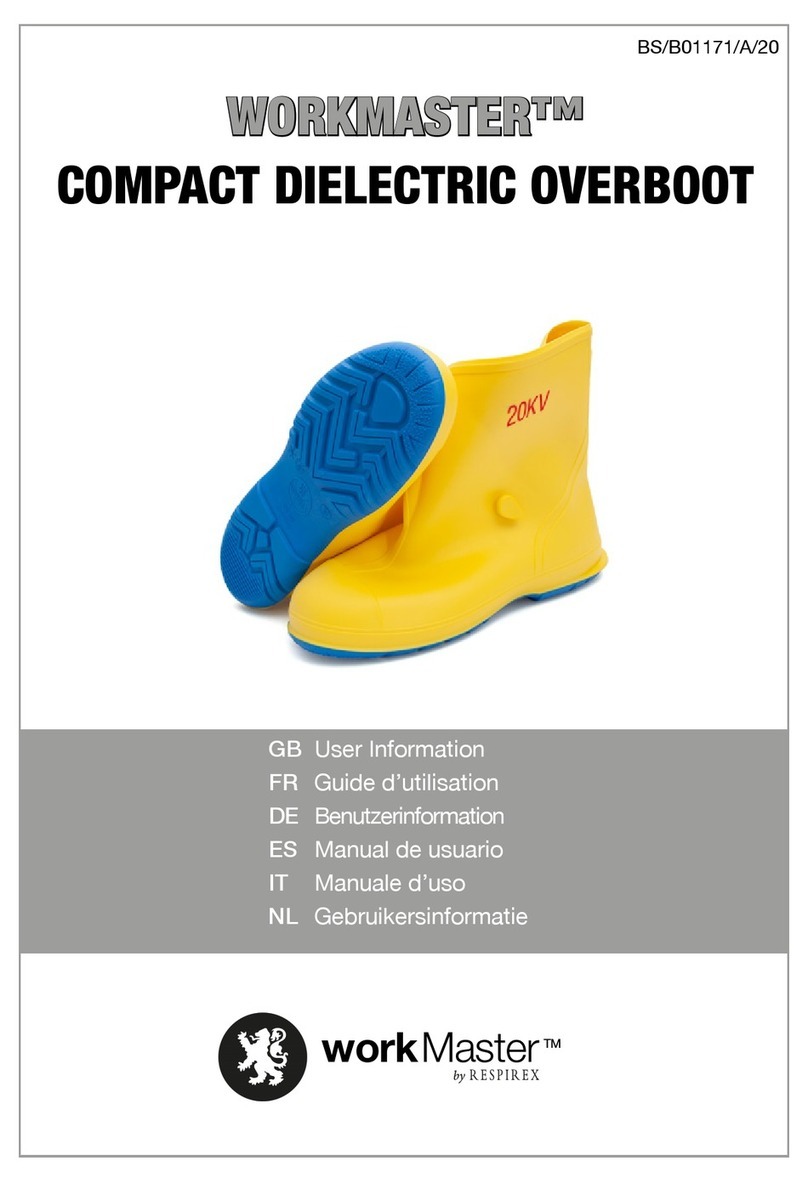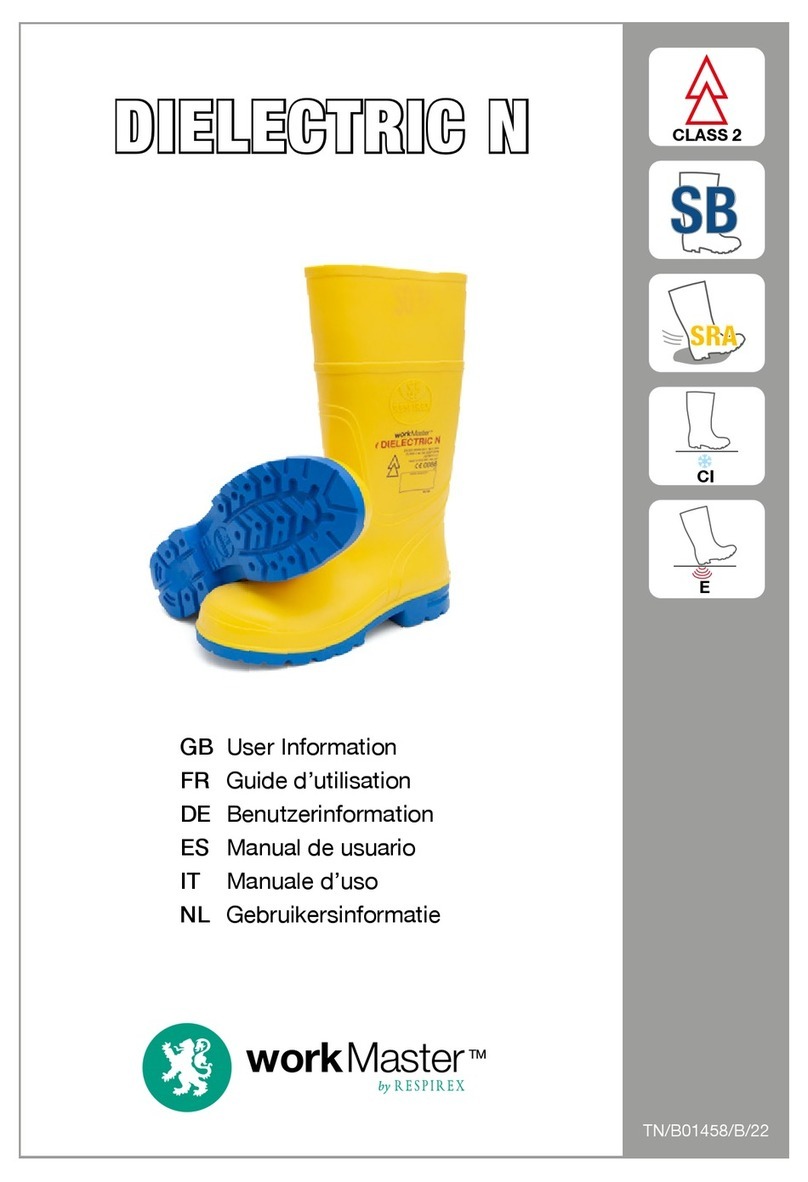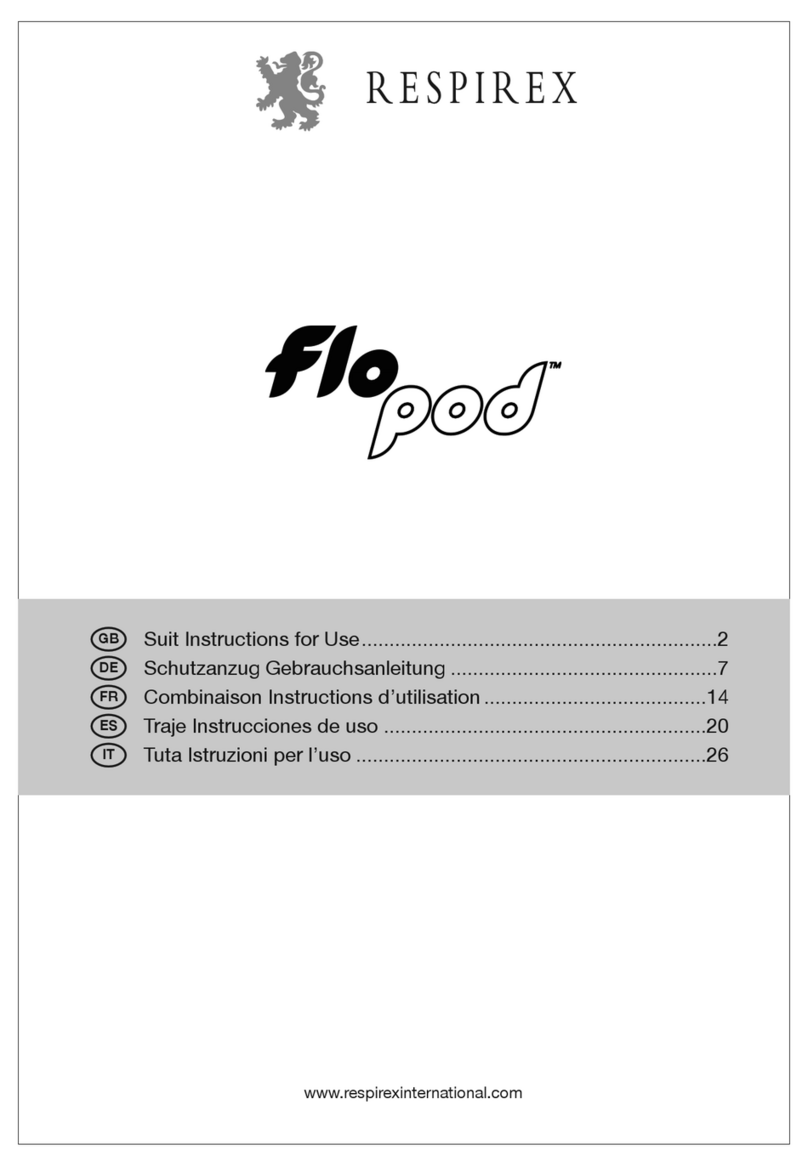
General Informa on
The Respirex Simplair hood is designed for use within certain contaminated environments only. You should carefully read and
follow the opera ng procedures detailed in these instruc ons.
The hood must be used in combina on with breathable air supplied from an external compressed air source that provides posi ve
pressure. Air fl owing into the hood must conform to the requirements of EN 12021:2014.
The Simplair hood is divided into two main sec ons; headtop assembly and air supply belt assembly. The headtop assembly meets
the lower strength requirements of EN 14594:2005, whilst the air supply belt meets the higher strength requirements. The product
is UKCA and CE marked to indicate compliance with European Regula on 2016/425 on personal protec ve equipment (PPE) and
Regula on 2016/425 on personal protec ve equipment as brought into UK law and amended, and complies with the following
harmonized and designated standards:
• Headtop assembly - EN 14594:2005 (con nuous fl ow compressed air line breathing apparatus with a hood) - Class 4A
• Air supply belt assembly - EN 14594:2005 (con nuous fl ow compressed air line breathing apparatus) - Class 4B
• EN 14605:2005+A1:2009 (protec ve clothing against liquid chemicals - clothing providing protec on to parts of the body
only (PB [4])
The standards above specify the physical performance requirements of the equipment, i.e. level of respiratory protec on and
mechanical strength of component parts etc, and also the resistance to permea on by liquids of the main material of construc on*.
The hood offers a nominal protecon factor of 2000 as detailed in the guidance document for respiratory protecve equipment,
EN 529:2005. The UKCA and CE Declarations of Conformity can be found at www.respirex.com/doc
* Performance results for the main material of construc on are detailed on a separate data sheet supplied with the hood.
Warnings & Limita ons
• Only for use by trained, competent personnel.
• Always seek advice if you are in any doubt as to the suitability of the Simplair hood for your par cular working environment.
Refer to rear of user instruc ons for contact details.
• Failure to follow all instruc ons and/or failure to wear the Simplair hood during all mes of exposure may be detrimental to
the wearer’s health.
• At high work rates pressure in the hood may become nega ve at peak inhala on fl ow or during bending or squa ng.
• The hood may not provide adequate protec on in atmospheres that are immediately dangerous to life or health (IDLH). Use
only in atmospheres where the oxygen content of the air is 18-23 vol.%.
• The hood must NOT be used with oxygen only or oxygen enriched air.
• Ensure the hood is used with a compressed air supply tube (CAST) of appropriate length and bore size (see page 2); a low
airfl ow may cause a reduced level of protec on.
• The equipment is designed to work on a range of air line pressures. The Simplair hood is supplied pre-set by Respirex to
operate at the end users specifi c air line pressure (the maximum airline pressure that the hood can be set to is 8.27 bar {120
lbf/in²}).
• The Simplair hood provides par al body protec on to classifi ca on PB [4] as defi ned by the harmonized standard
EN14605:2005+A1:2009. Seek alterna ve PPE if full body protec on is required. Always use compa ble PPE, e.g. gloves and
safety boots advised by Respirex.
• The Simplair hood is manufactured from non-breathable materials; it is likely that the wearer’s body temperature will rise
during use, par cularly throughout periods of intense physical ac vity. Users who show signs of excessive stress such as
fever, nausea, dizziness, eye irrita on, diffi culty in breathing, becoming fa gued or any unusual order or taste, should leave
the working environment immediately and remove the hood. Wherever possible opera onal procedures should be planned
to minimize the risk of heat stress occurring. Respirex assumes no responsibility for improper use of the Simplair hood.
• If the hood is to be used in low temperatures and mis ng of the visor occurs, apply Respirex FOG OFF to the inner and outer
surfaces of the visor.
• The Simplair hood is not designed to be used for abrasive blas ng opera ons or in applica ons with a high fl ammability risk.
Alterna ve PPE off ering the necessary level of protec on should be u lised for such applica ons.
• The Simplair hood should not be worn in working environments where protec on against non-ionizing radia on is necessary.
• Materials used in the construc on of the Simplair hood are not known to cause allergic reac ons to the majority of individuals.
The hood contains no components made from natural rubber latex.
For any enquiries please contact the Respirex customer services department on Tel : +44 (0)1737 778600 or Fax : +44 (0)1737
779441.
1
